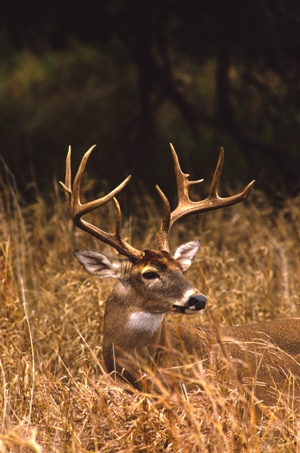 “I got the day off work! I’m heading to the treestand.” So many hunters never even consider the wind direction, whether the thermal is in their favor, if they can approach their ambush location without being busted, and a dozen other details that will ultimately factor into their success. They hunt because they have the opportunity to hunt without considering that they may be doing more harm than good. Mature bucks will often detect a hunter like this before he ever sees the animal. Abiding by the following suggestions regarding hunting pressure will help you to consistently harvest mature bucks.
“I got the day off work! I’m heading to the treestand.” So many hunters never even consider the wind direction, whether the thermal is in their favor, if they can approach their ambush location without being busted, and a dozen other details that will ultimately factor into their success. They hunt because they have the opportunity to hunt without considering that they may be doing more harm than good. Mature bucks will often detect a hunter like this before he ever sees the animal. Abiding by the following suggestions regarding hunting pressure will help you to consistently harvest mature bucks.
- Strike only when the time is right. Don’t hunt just to hunt! Wait for the conditions to be in your favor, not in favor of the whitetails. Hardly ever do all the “stars align,” but you should try to put as many factors in your favor as possible before making an attempt, especially the wind and thermal.
- Screen your approach. Whether you place your ambush site in a location that you can easily approach undetected or you plant screening cover to conceal your approach, you must make it to your hunting site without spooking the herd. Screening cover like BioLogic’s Blind Spot (LINK) is easy to plant and grow in just a few weeks. Or you may wish a more permanent solution like conifer trees or tall warm season perennial grasses. You should be able to make it to your stand site with whitetails bedded within 50 yards.
- Use the buddy system. If you do have to approach through areas where you may bump deer, have someone drive you to your ambush site in a familiar vehicle like an ATV or farm truck. A vehicle is MUCH less intrusive than a hunter on foot and when the vehicle leaves the perceived threat is gone as well. Make sure to have your friend pick you up also, but having someone drop you off at, or near your ambush location will significantly cut down on the pressure put on your herd.
- Leave them ALONE! If you wish to house mature bucks in your hunting area and have daylight activity you need to give them a spot where they are left alone. If they are pressured they will change something to avoid making consistent contact with you. You should plan to set aside area for their sanctuary. How big the sanctuary should be is somewhat relevant to the size of the property. Five acres is large enough for a bedding area, but the more the better. Sanctuaries are usually going to be located towards the center of a property, but that’s not mandatory, and normally they will consist of the thickest cover in the area.
- Pressure on purpose. With all of the above about never putting pressure on the herd, there are some instances where you may need to use pressure. If you wish to get a mature buck up and moving during legal shooting light you may need to use pressure. There are also some locations like CRP areas or cattail swamps where it’s almost impossible to create a decent ambush site. In this case, pressure may be your best tactic. Hunters that have had success with this tactic will often put pressure on once just to observe the area. They watch the escape routes and take notes. Then they wait for similar conditions, set up on the escape routes and apply pressure again.
This tip is courtesy of the GameKeepers Field Notes, a weekly wildlife and land management email newsletter produced by the Mossy Oak GameKeepers.
A GameKeeper by definition is someone who truly loves AND lives the land, the critters and nature…not just during hunting season but all the time. A GameKeeper wants to be outdoors every day and work the dirt while living their personal “obsession”.
Find out more about what makes a GameKeeper by visiting our website.































